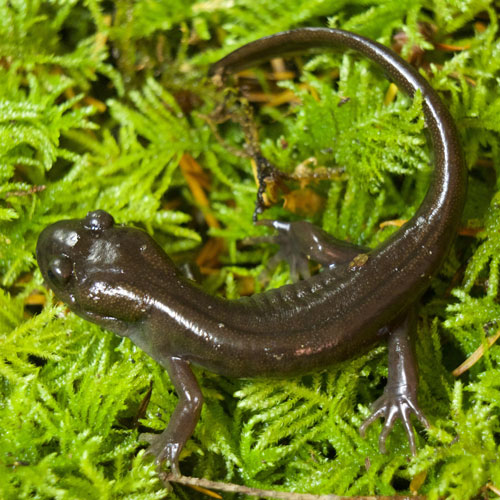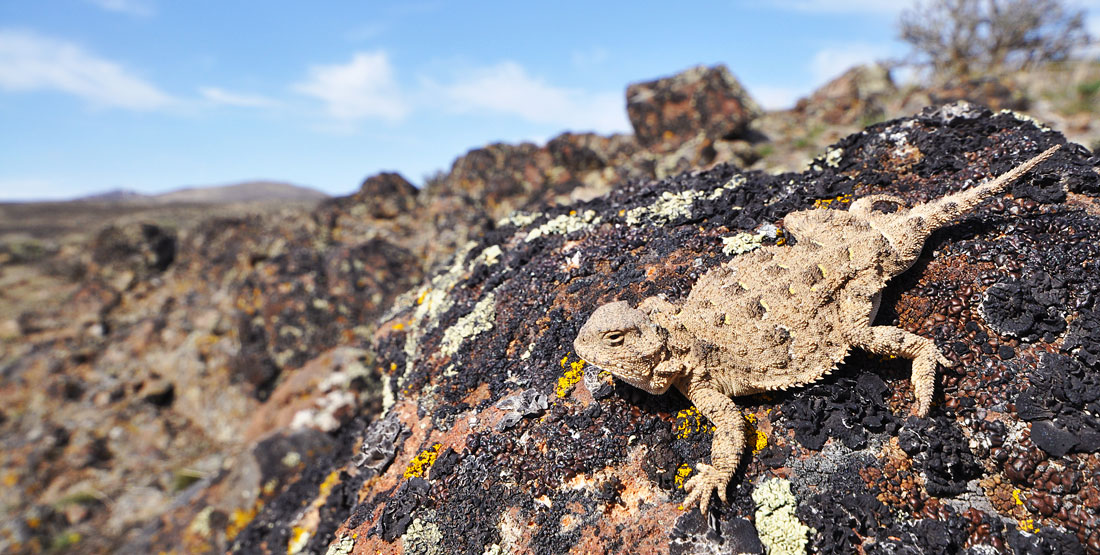FAST FACTS
Where they live
- View a map of where they live.
- Short-horned lizards can be found in many areas of the northwestern United States, ranging from near the Canadian border to northeastern California, northern Nevada, and southern Idaho.
- Even though they tend to live in open, shrubby, or openly wooded areas scattered with ground plants, their habitats range from semi-arid plains to mountains.
What they eat
- Short-horned lizards feed on insects, especially ants.
Breeding
- Between July and September, females give live birth to 3 to 15 young.
Cool Biology Facts
- Overall, horned lizards are rather toad-like in appearance, hence their Latin name “Phrynosoma” meaning “toad body”.
- To help hide from predators and seek refuge on hotter days, they use a technique called “shimmy burial” in which they slide their body side-to-side in loose soil or sand to partly submerge themselves.
Threats
- Even though the destruction of habitat for agriculture may threaten short-horned lizards, they are considered “least concern” due to their large range and large stable populations.
- View their status on the IUCN Red List of Threatened Species.

Amphibians & Reptiles of Washington
Do you know where rattlesnakes live in our state? Or which salamander breathes through its skin? Explore the fascinating diversity of the 26 species of amphibians and 28 reptiles found in Washington state.

